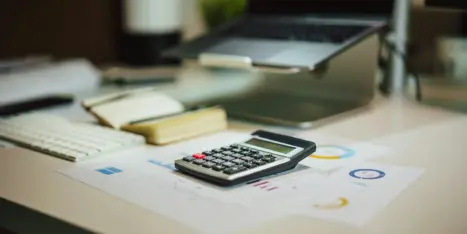For the last 10 years, internet visionaries, tech company CEOs and media moguls have told us we’re in an “Age of Convergence” that will change the way we live, learn and interact with each other. Indeed, things have changed. But if you’re involved in web design or any other type of interactive media, you probably haven’t noticed much of anything “converging.” In fact, design requirements are more diverse than ever.
When luminaries and tech writers talk about convergence, they mean that devices are becoming more multi-functional (browse the web on your Wii ) and networks are becoming more interconnected (see your bank balance on your phone). In this “Age of Convergence” all the world’s text, audio and video is set free, allowing you to access anything from anywhere.
So technology is converging, but is design? Not so much. Compared to 10 years ago, there are actually far more, not fewer, design considerations. Here is a short summary of three ways in which the last 10 years have created diverging design requirements.
Variety of Screen Sizes
In the early days of the internet, the size of people’s screens didn’t vary all that much. Most screens were one of three sizes: 640×480, 800×600 or 1024×768. The variety of screens has exploded in the last few years.
In February of 2008, the people who visited OrbitMedia.com used 27 different screen sizes. In the last two years that number doubled to 57 different screen sizes, ranging from the tiny (320 pixels wide) to the huge (2560 pixels wide).
With the rollout of tablets, such as Apple’s iPad, there is now another screen size to think about, smaller than a laptop, bigger than a phone. This is the so-called “fifth screen” (the first four were the movie screen, TV screen, computer screen and phone/PDA screen). But the tablet computer isn’t just a new size, it’s a new touchscreen. More about that in a minute…
Designing for Integration
Someday in the future, you may log into your TV using Facebook and read what your friend said about a movie before watching it. Sounds great! But what will that interface look like?
Everyone likes to use the word “seamless” when they talk about integration. But when done right, seamlessness is like visual surgery. Designers are the surgeons, carefully grafting the parts together.
As more systems connect, it’s the designers who make it look right and easy to use.
- For web designers, it’s often embedding the Twitter feed, video player, photo gallery, Google maps.
- For web application designers, it’s often about displaying information from external databases.
But as the age of convergence marches on, there is increasingly little difference between web sites and web applications.
More (Touch)screens in More Places
Used a touchscreen lately? Do you have one in your pocket? You probably have used one in an airport. What about a taxi, bar, office lobby or museum? Designing for touchscreens is becoming more common and this means designs need to adapt: fingertip-sized buttons, more sliding interfaces and no rollovers.
The tablets will bring a new type of touchscreen design, especially to media and content companies. Sports Illustrated has big plans for a touchscreen-friendly table version of its magazine (see the demo here). This is pretty exciting. Looks like interface designers and the video producers are going to be good friends!
And That’s Not All…
Here are a few other examples of new design requirements, thanks to technological convergence:
- Mobile Device Sensors
Mobile App designers often create interfaces that use sensors within the device. Apps like FourSquare show where you are using GPS. Apps like UrbanSpoon use the accelerometer – physically shake the phone to get a restaurant recommendation. - Video and Advertising Content
Designers are merging ads and promotions into video content in just about every way you can imagine: interstitial ads (on TV and online, banner ads on YouTube clips, webisodes, vlogs, sponsored video channels and video-based ad units.) - Digital Signage
You may have noticed there are suddenly a lot more screens in public places. Although they may not be interactive, designers are needed to make all those videos and animations we see in the elevators and on the sides of busses.
Bottom Line
As the promise of converging technology is realized and we can all see whatever we want from wherever we are, screens will continue to multiply in all shapes and sizes. Designers have more things to think about and their role is more important than ever.
So when a company asks for a website that looks good on phones AND home theater systems, or a tool that works on tablet touch screens AND inside Facebook, someone has to design it. How will they do it? Hopefully, with a thoughtful, deliberate approach and plenty of usability testing!
Let’s enjoy this age of convergence, but let’s also listen carefully to design experts. The work they do is more challenging and important than ever.




